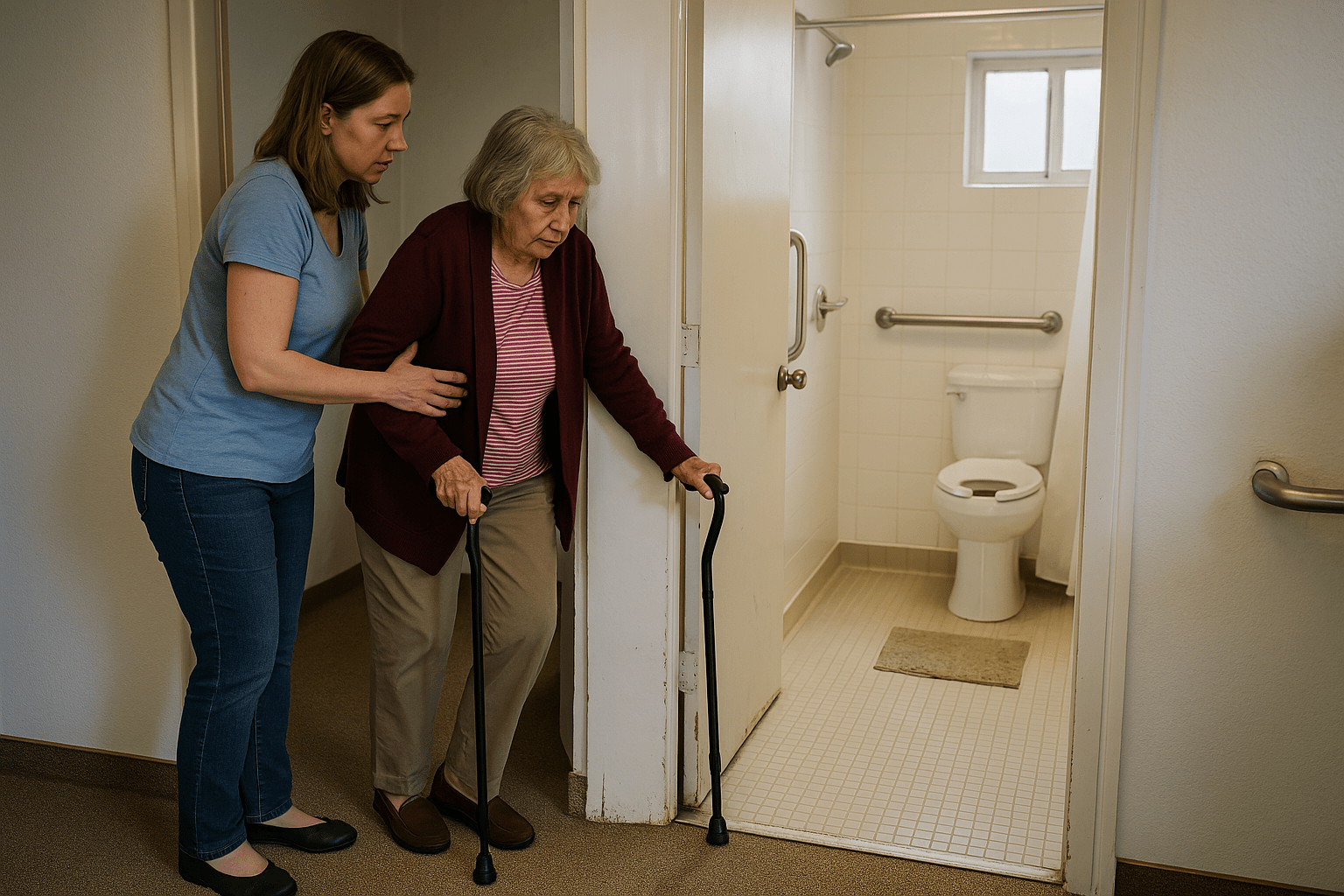As parents get older, everyday things that used to be simple can start to get a bit harder; and sometimes even risky. Moving around the house, stepping in and out of the tub, or reaching for something in a cabinet can suddenly lead to accidents. That’s why it’s important to make their space safer before anything happens.
Even small changes can lower the chance of falls or other problems. These changes don’t have to be expensive or complicated. It’s more about paying attention to the details that can cause trouble and finding smart ways to fix them.
Why fall protection should be a top priority
Out of all the safety concerns in a senior’s home, falling is one of the biggest. It’s not just about getting bruised. It can lead to broken bones, hospital stays, or a long recovery. Some falls even lead to long-term problems that change how a person lives.
That’s why it’s important to think beyond just rugs and handrails. Today, there are simple tech tools made to help in case a fall does happen. For example, you could look into fall detection devices for elderly. These tools can automatically notice when someone falls and send an alert for help – even if they can’t reach the phone.
That kind of help can mean the difference between getting assistance right away or being stuck for hours. Devices like these don’t take up space, and they don’t get in the way of daily life. Most of the time, the person wearing one forgets it’s even there until they need it.
Start with clear walking paths
The first thing to look at in any home is how easy it is to walk from room to room. That means no cords stretched across the floor, no boxes or furniture in the way, and no rugs that slide around.
Even small things can trip someone. A rug corner sticking up or a shoe left in the hallway can lead to a fall. So the goal is to make sure paths are clear and wide enough to walk through easily, even if someone is using a walker or cane.
Also, try not to pack furniture too close together. Give enough space so it’s easy to move around, especially at night or when someone’s in a rush to get to the bathroom.
Lighting matters more than you think
Good lighting helps people see where they’re going, and that means fewer trips or stumbles. A lot of older adults can’t see as well in dim light, especially early in the morning or late at night.
Start by making sure there are enough lights in key areas – hallways, bathrooms, staircases, and kitchens. Then think about adding night lights in places they might go after dark, like the path from the bedroom to the bathroom.
Touch lamps or lights that turn on with motion are helpful too. They cut out the need to search for a switch in the dark.
Make the bathroom safer
Bathrooms are one of the most common places where seniors fall. Wet floors, slippery tubs, and awkward movements can all be a problem.
There are a few easy fixes:
- Put a non-slip mat in the tub or shower.
- Add grab bars near the toilet and inside the shower.
- Raise the toilet seat if it’s too low; it helps make sitting and standing easier.
- Use a shower chair if standing too long is hard.
Also, make sure everything is within reach – soap, shampoo, towels – so there’s no need to stretch or lean while wet.
Fix problem areas in the kitchen
Reaching too high or bending too low can be risky. Try to keep the things your parents use every day in easy-to-reach spots. That means plates, cups, snacks, or medications should all be between waist and shoulder height.
If anything is in a spot that’s hard to get to, help move it somewhere better. A step stool with a handle might be useful, but only if it’s super stable and they feel confident using it. Even then, it’s usually safer to just rearrange things.
Also, keep towels and potholders away from the stove to prevent fires. And if possible, add knobs on appliances that are easier to grip and turn.
Don’t forget about stairs
Stairs can be tough even for healthy people, but for someone with balance or joint problems, they can be really dangerous. First, make sure every step is even and not loose or broken. Then check the railing. There should be one on each side if possible, and it needs to be strong.
If the stairs are carpeted, the edges should be secure so nothing slips. If they’re wood, adding non-slip treads can help. And of course, the whole staircase should be well lit.
If your parent’s bedroom is upstairs and they’re having trouble with stairs, think about moving their room to the main floor if that’s an option.
Safety without taking away independence
A lot of seniors don’t want to feel like they’re being treated like kids. So any safety updates should still let them feel in control. That’s what makes fall detection devices so helpful. They provide support without anyone having to check in constantly.
Other changes, like moving furniture or adding grab bars, might take a little getting used to, but they’re about keeping things comfortable, not limiting freedom.
When people feel safer, they’re usually more willing to keep doing the things they enjoy, whether that’s cooking, gardening, or just walking around the house.
Helping without hovering
There’s a difference between helping someone stay safe and taking over everything. Most parents just want to know their family cares and wants them to stay independent as long as possible. Safety tools and home changes help make that possible.
It’s not about expecting the worst. It’s just being ready in case something unexpected happens.
Takeaway
Making a home safer for aging parents isn’t about giant renovations. It’s about small, smart changes that make life easier and help prevent emergencies. Clear walkways, good lighting, simple bathroom updates, and helpful tech tools all play a part.
Most of these things don’t take much time or money, but they make a huge difference in daily life. And more than anything, they show love – by making sure your parent’s home isn’t just where they live, but where they can feel safe too.
Amelia Hart, a psychology graduate from the University of Hertfordshire, has a keen interest in the fields of mental health, wellness, and lifestyle.








